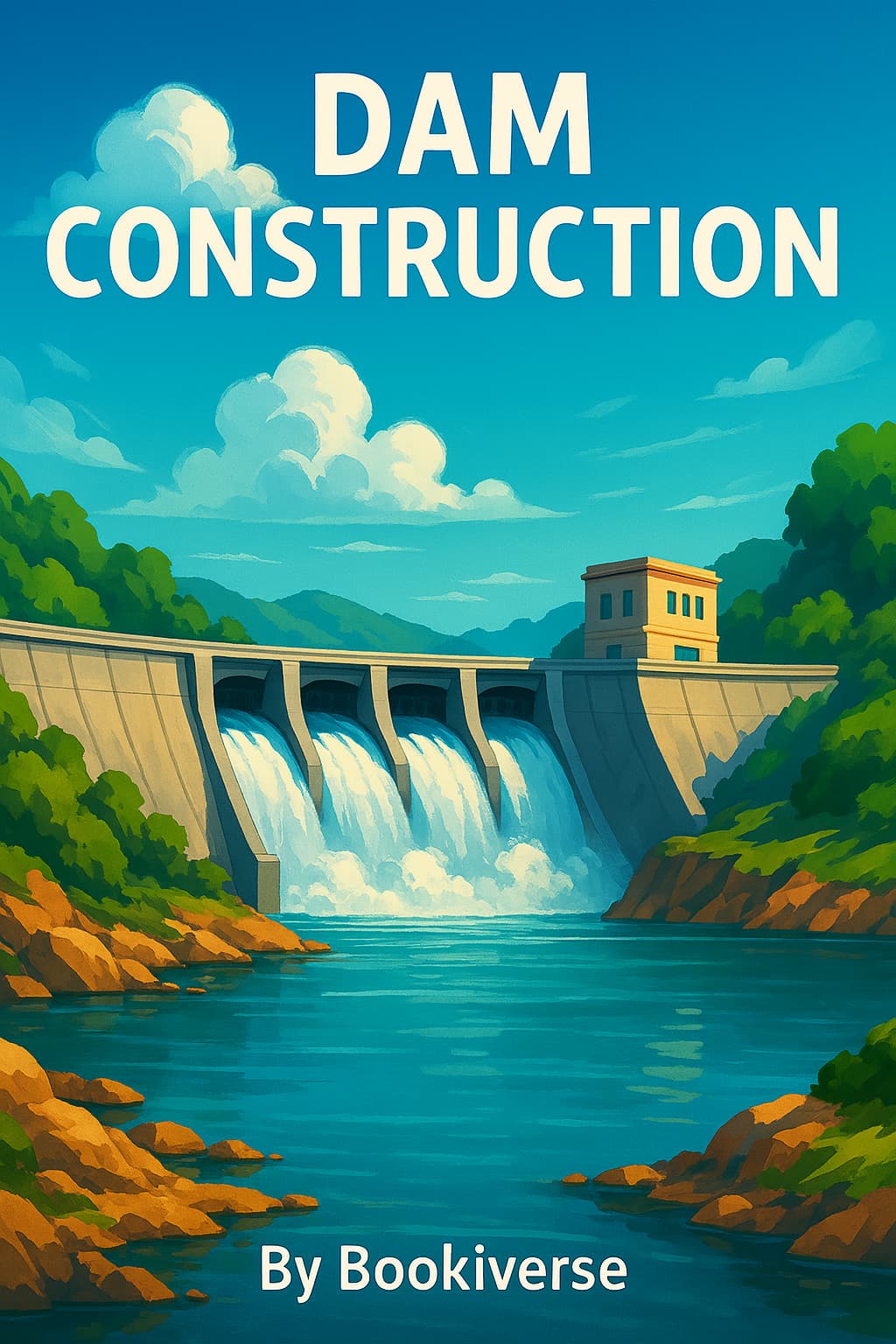Hey! Good afternoon, everyone.
Today’s lecture will explore a subject that stands at the intersection of engineering, environmental science, and socio-economic development: dam construction. Dams have played a crucial role in shaping human civilization, providing water security, enabling agriculture, generating hydroelectric power, and controlling floods. Yet, behind the concrete and steel lie complex challenges that require deep technical expertise and ethical reflection.
Let us begin by defining what a dam is. At its core, a dam is a barrier built across a river or stream to hold back water. This stored water forms a reservoir, which can be used for a range of purposes—from irrigation and drinking water to power generation and recreation. While dams have existed in various forms since ancient times, modern dam construction is an advanced field involving disciplines such as civil engineering, hydrology, geology, and environmental management.
There are several types of dams, each designed to suit specific geographical, geological, and hydrological conditions. The most common include:
- Gravity Dams – These rely on their immense weight to resist the force of the water. Constructed from concrete or stone masonry, they are often built in narrow valleys with firm bedrock.
- Arch Dams – Curved in shape and designed to transfer the water pressure to the valley walls, these require less material but demand extremely stable surrounding rock formations.
- Embankment Dams – Made from earth or rock-fill, these are the most common type worldwide. They are less expensive to build and adaptable to a wide variety of landscapes.
- Buttress Dams – These have a sloping deck supported by buttresses, reducing the volume of material needed.
Now, let’s turn to the process of dam construction, which involves several phases, each of which must be carefully planned and executed.
The first step is site selection. Engineers and planners must evaluate various factors: the river’s flow rate, the geology of the valley, the seismic activity of the region, environmental impact, and the socio-economic implications for nearby communities. Once a suitable site is selected, detailed feasibility studies are conducted. These include hydrological analyses, soil testing, and environmental impact assessments.
Next comes design and engineering, where technical teams develop blueprints, simulations, and risk models. This is followed by the actual construction phase, which can take several years and involve thousands of workers, massive machinery, and logistical coordination. Concrete must be poured in specific layers; spillways and sluice gates must be installed to manage excess water; and safety measures, such as drainage galleries and monitoring instruments, are embedded into the structure.
Once completed, the dam enters its operation and maintenance phase, where it is continuously monitored for structural integrity, reservoir levels, and ecological impact.
Speaking of impact, it's crucial to consider both the benefits and downsides of dams.
On the positive side, dams contribute enormously to economic development. They provide hydroelectric power, a renewable and clean energy source. They ensure water supply for agriculture, particularly in arid regions. They help prevent flooding in vulnerable areas. Moreover, reservoirs created by dams often become recreational sites, supporting tourism and fishing.
However, dams also come with serious environmental and social costs. One of the major concerns is ecosystem disruption. Dams block the natural flow of rivers, affecting fish migration, sediment transport, and the overall riverine ecology. Species that depend on free-flowing water can become endangered or extinct. The flooding of vast areas to create reservoirs can lead to deforestation and loss of biodiversity.
In addition, dam construction often involves the displacement of human populations. Entire villages or towns may need to be relocated, which leads to complex issues of compensation, cultural loss, and social disruption. A notable example is the Three Gorges Dam in China, which required the relocation of over a million people and submerged numerous archaeological and cultural sites.
There are also geological risks. The immense weight of water stored in a reservoir can trigger reservoir-induced seismicity, i.e., earthquakes. The failure of a dam, though rare, can be catastrophic. The collapse of the Banqiao Dam in China in 1975 led to the deaths of over 170,000 people, underscoring the need for rigorous safety protocols and regular inspections.
So, how do modern engineers and policymakers navigate these trade-offs?
Firstly, there is a growing shift toward integrated water resource management (IWRM), which considers the entire river basin and involves multiple stakeholders in the planning process. Environmental flow studies are now standard practice, ensuring that rivers maintain enough flow to sustain ecosystems.
Secondly, advancements in engineering and materials science have improved dam safety and efficiency. Smart sensors embedded in modern dams provide real-time data on pressure, temperature, and vibrations. Remote monitoring systems allow for early detection of potential problems.
Thirdly, there is increasing emphasis on alternative technologies. In some regions, small-scale, run-of-the-river hydro projects are preferred over large dams. These have lower environmental impact and are often easier to maintain. Moreover, green infrastructure solutions—like wetlands restoration and natural floodplain management—are being explored as complements or even alternatives to traditional dams.
At the global level, international organizations such as the World Commission on Dams (WCD) and the International Hydropower Association (IHA) have developed guidelines for responsible dam construction. These frameworks emphasize sustainability, transparency, and equitable sharing of benefits.
In conclusion, dam construction is far more than a matter of pouring concrete across a river. It is a multifaceted endeavor that combines advanced science with deep ethical considerations. As future professionals—whether you go into engineering, environmental science, policy, or economics—it is essential to view dams not only as feats of infrastructure but as interventions in complex natural and human systems.
The future of dam construction lies in balance—balancing development with conservation, energy with equity, and progress with precaution. Understanding the science behind dams is only the first step. The real challenge is ensuring that their construction serves not only our present needs but also the needs of future generations.
Thank you for your attention. I welcome your questions and look forward to a thoughtful discussion.
